
Engelmann, Memoirs of the American Academy of Arts and Science n.s. 4(1): 51, 1849
Lectotype; Herbarium; Herbarium; Herbarium; Herbarium; Herbarium; Herbarium; Herbarium; Herbarium; Herbarium; Herbarium; Herbarium; Herbarium; Herbarium; Herbarium; Painting
O. phaeacantha shares similarities with O. camanchica
O. phaeacantha shares similarities with O. gilvescens
Original Description
What is Opuntia phaeacantha?
Opuntia phaeacantha is a common and wide-ranging Opuntia (CO, OK, NM, UT, AZ, NV, CA, Trans-Pecos TX, and Mexico) that forms a low, irregular, sprawling clump, sometimes with only one or two branches. In other areas with more plentiful rain or milder winters, O. phaeacantha has many branches and forms a mat 4(6)-ft across.
Details
From Powell and Weedin, page 160:
Opuntia phaeacantha is a prickly pear cactus with weak stems. The stems of this cactus have less wood than the related O. camanchica. The pads of this Opuntia sag in winter and can even lie down flat on the ground as in O. tortispina or O. macrorhiza. Unlike O. tortispina, there are no sharply defined transverse wrinkles on the pads. The summer habit is erect, but sprawling and not ascending. O. phaeacantha is 10-50 cm tall and often in the short end of that range. However, it is generally taller than O. tortispina. Pads are obovate to broadly elliptic to suborbicular, 10-22 cm long and 9-18 cm wide, averaging larger than those of O. tortispina. Spines in this prickly pear are typically present over the upper three-fourths to one-half of the pad but are not as numerous as in O. tortispina. Over much of its range, O. phaeacantha is often sympatric with O. polyacantha (northerly) or O. engelmannii (southerly).
Flowers of this Opuntia are yellow with red centers, 5-7 cm long and wide, but in some areas, other colors occur. Filaments and anthers are generally pale yellow. The style is cream to pinkish and the stigma lobes are yellowish to pale green or even deep green, a common arrangement in many prickly pear cactus species. The pericarpel is 2-4 cm long with scattered areoles. Flowers are known that are entirely yellow, orange, pink, or magenta.
The fruits are reddish and 3.5-4.4 cm long, 1.9-2.8 cm wide, turbinate, or broadly clavate with a shallow or deeper umbilicus. Fruit pulp is bright red or pinkish and sweet. The seeds are 4-5 mm in diameter, discoid-reniform or irregularly orbicular, with a hilar notch, and a margin of about 0.5 mm.
The subapical areoles of this Opuntia are 2-5 cm apart, oblong to orbicular, 5-6 mm long, 3-5 mm wide, and filled with brownish hairs. The most common spine pattern in subapical areoles includes 2 spines situated in the center of the areole, one above the other. The lower spine is deflexed and often whitish. It is flattened proximally, terete distally, and 2-3 cm long. The second spine of this prickly pear cactus is immediately above the lower spine and is also deflexed, but less so. It is larger than the lower spine but is also flattened proximally and terete distally. It is 35-5(6.4) cm long and 1-1.3 mm in diameter. In many locations, the larger spine may be twisted and white or tan. Other colors occur in different populations with some being quite dark. A third, often-shorter spine, may be present, but this spine may equal the upper spine in length. In some plants, in distal areoles, there may be 3 deflexed spines and 1 or 2 upper spines. Or there may be 2 deflexed spines. Many areoles in many populations have 2 (or more?) smaller radial spines—these are slender, needle-like, 5-8 mm long, and often pale.
Opuntia phaeacantha is hexaploid.
Other Notes
Because it is so widespread and has so many expressions it seems clear that more study of this taxon is needed. Possibly there are varieties to be described. Or, perhaps there are two or more cryptic species contained within O. phaeacantha s.l.
Oddly, the original description of O. phaeacantha is muddled and describes two different species. Two different Opuntia species were combined in the original description of O. phaeacantha. The first, a smaller prickly pear cactus, is the one that became O. phaeacantha. The second, larger one, was named var. major by Engelmann and it grew in another location; this taxon is the same basic thing as O. dulcis.
In addition to the many specific epithets, many subspecific varieties of O. phaeacantha have been described including var brunnea (= O. camanchica), var major (= O. dulcis), var nigricans (= typical O. phaeacantha), var phaeacantha, and var superbospina. Many of the published varietal names are technically valid, they just don’t apply to O. phaeacantha, or they are absolute synonyms (e.g., nigricans is based on the type specimen of O. phaeacantha. Many garden variants of this wide-ranging species have also been described. See Green and Ferguson (2012) for more information about O. phaeacantha and names. Therefore, distinctive populations of this Opuntia have not been properly named. Proper identification and naming of multiple taxa may happen in the future, and perhaps new species will be separated out.

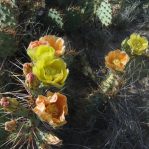
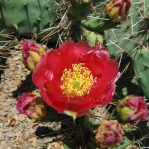
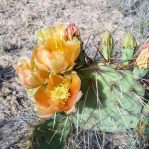
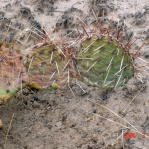
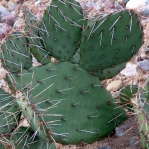
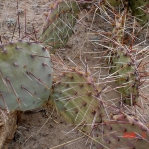
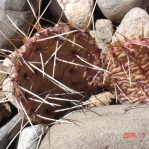
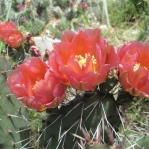
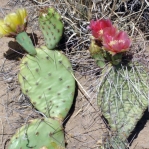
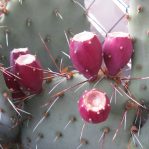
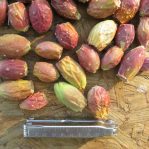
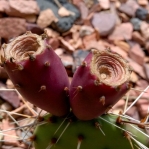
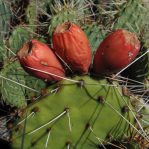
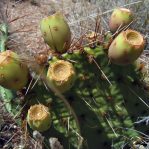
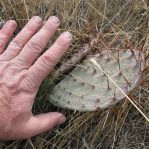
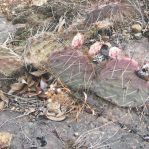
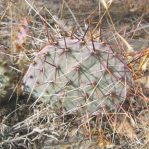
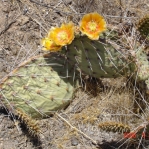
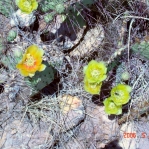
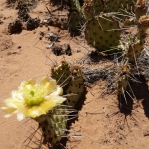
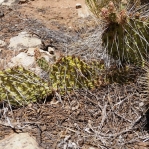
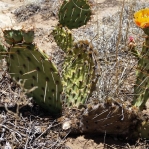
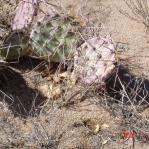
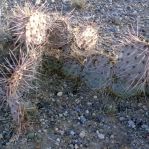
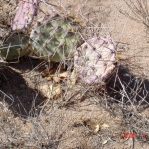
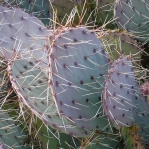
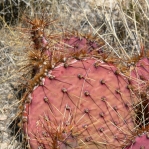
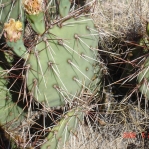
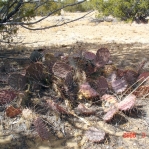
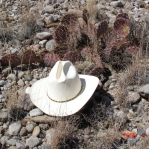
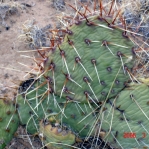
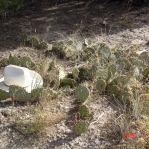
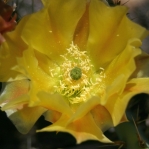
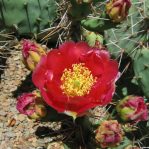
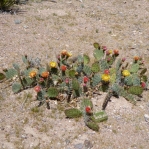
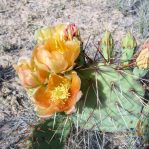
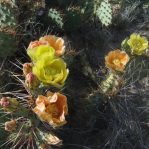
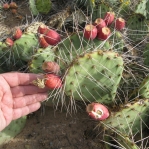
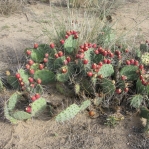
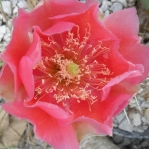
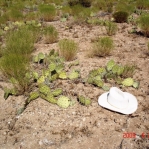
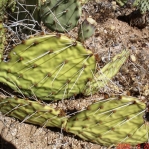
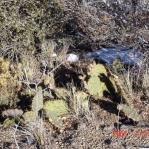
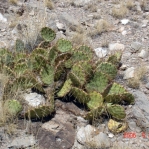
That looks like ours, but some have better fruit than others. There’s a patch of them just upriver from Weeping Rock, Zion Canyon, that has excellent fruit. There’s another one in the town of Springdale, but it is declining. I suspect these are remnants of old horticultural experiments.
ive had opuntia in usate ny. In winter it turn purple and flaten out. No one flet it would come back. I also have a cholla as well. Are there any other cactus that could servive zone 6 thanks joseph